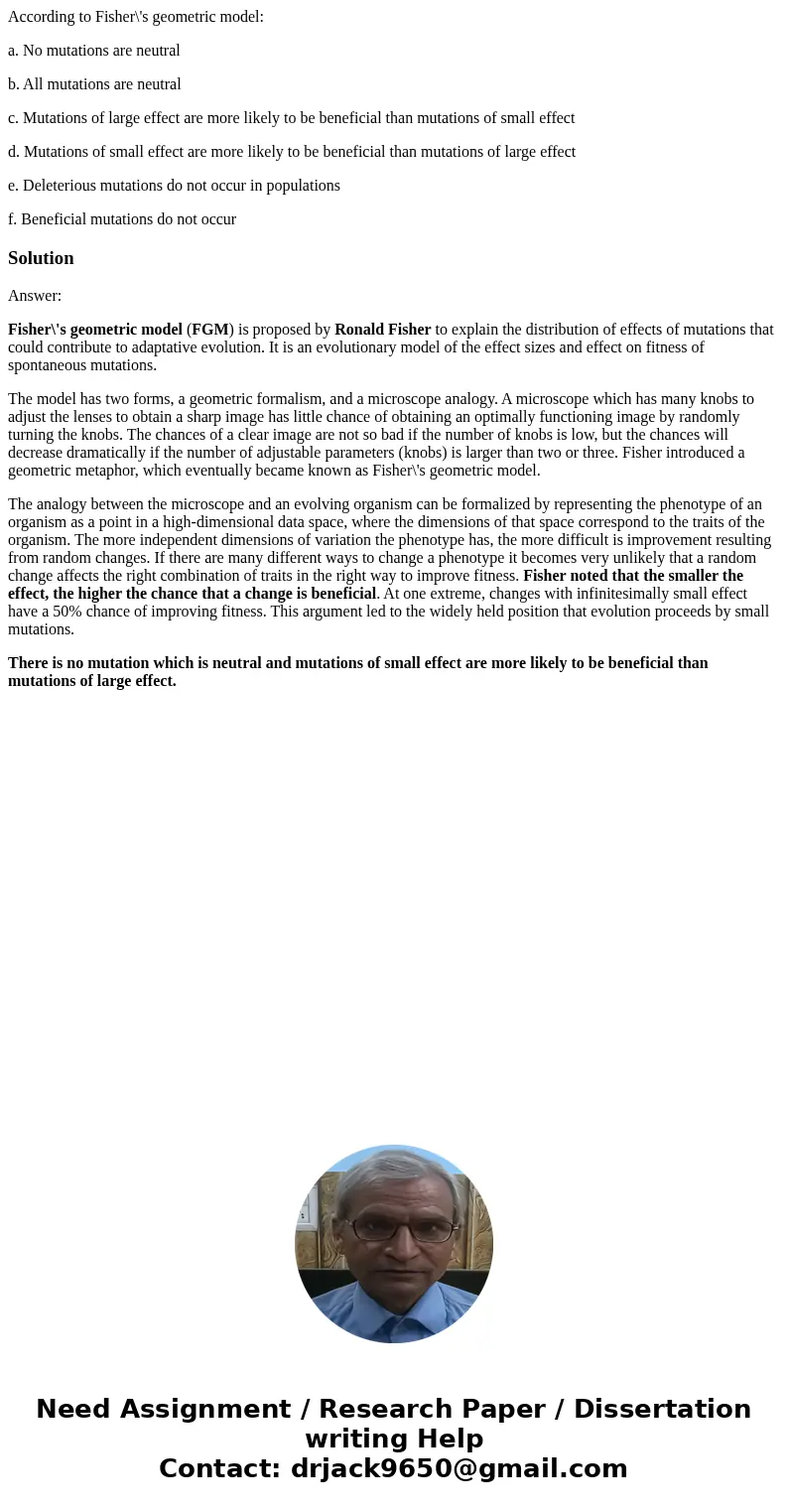According to Fishers geometric model a No mutations are neut
According to Fisher\'s geometric model:
a. No mutations are neutral
b. All mutations are neutral
c. Mutations of large effect are more likely to be beneficial than mutations of small effect
d. Mutations of small effect are more likely to be beneficial than mutations of large effect
e. Deleterious mutations do not occur in populations
f. Beneficial mutations do not occur
Solution
Answer:
Fisher\'s geometric model (FGM) is proposed by Ronald Fisher to explain the distribution of effects of mutations that could contribute to adaptative evolution. It is an evolutionary model of the effect sizes and effect on fitness of spontaneous mutations.
The model has two forms, a geometric formalism, and a microscope analogy. A microscope which has many knobs to adjust the lenses to obtain a sharp image has little chance of obtaining an optimally functioning image by randomly turning the knobs. The chances of a clear image are not so bad if the number of knobs is low, but the chances will decrease dramatically if the number of adjustable parameters (knobs) is larger than two or three. Fisher introduced a geometric metaphor, which eventually became known as Fisher\'s geometric model.
The analogy between the microscope and an evolving organism can be formalized by representing the phenotype of an organism as a point in a high-dimensional data space, where the dimensions of that space correspond to the traits of the organism. The more independent dimensions of variation the phenotype has, the more difficult is improvement resulting from random changes. If there are many different ways to change a phenotype it becomes very unlikely that a random change affects the right combination of traits in the right way to improve fitness. Fisher noted that the smaller the effect, the higher the chance that a change is beneficial. At one extreme, changes with infinitesimally small effect have a 50% chance of improving fitness. This argument led to the widely held position that evolution proceeds by small mutations.
There is no mutation which is neutral and mutations of small effect are more likely to be beneficial than mutations of large effect.

 Homework Sourse
Homework Sourse